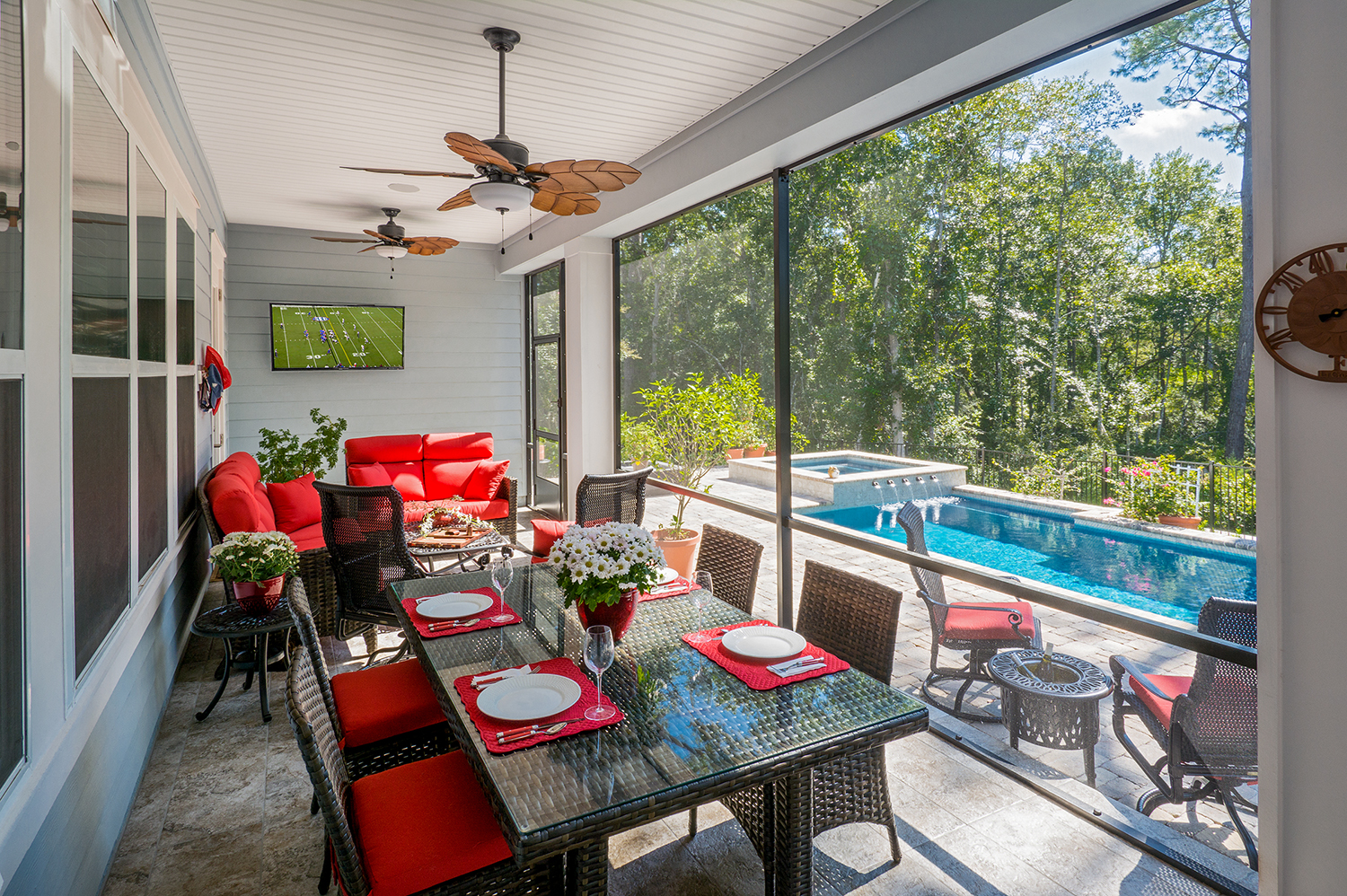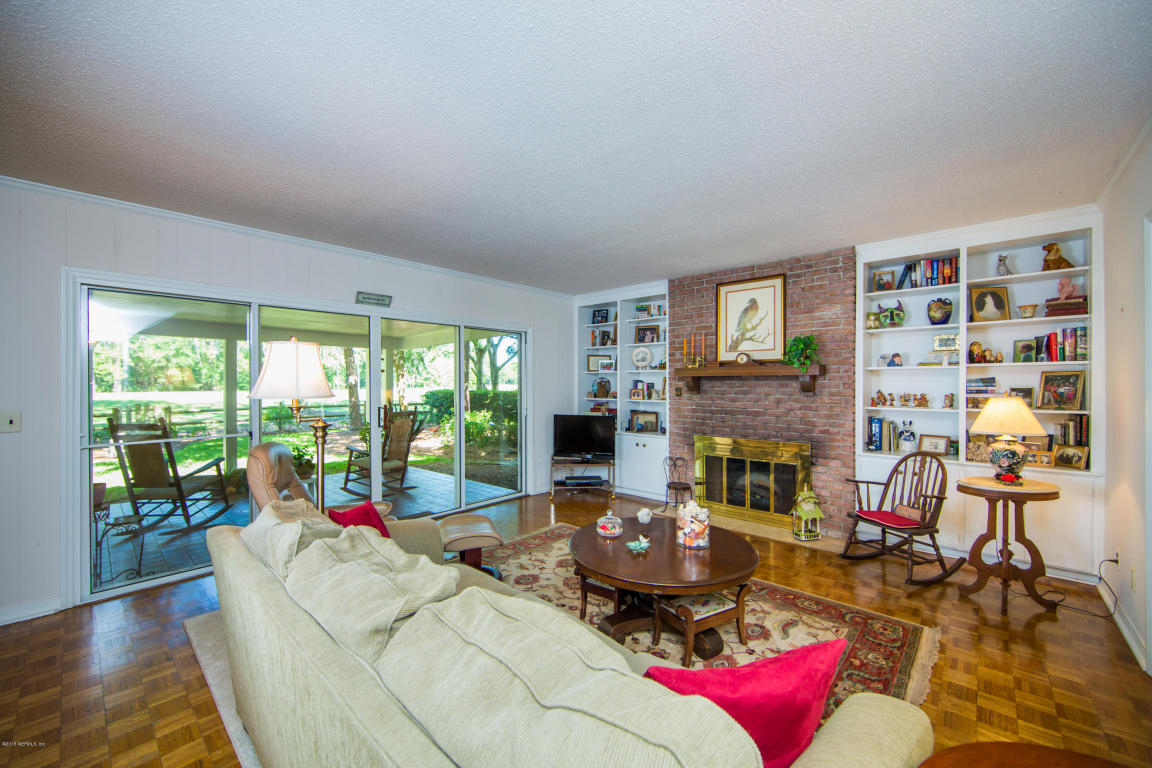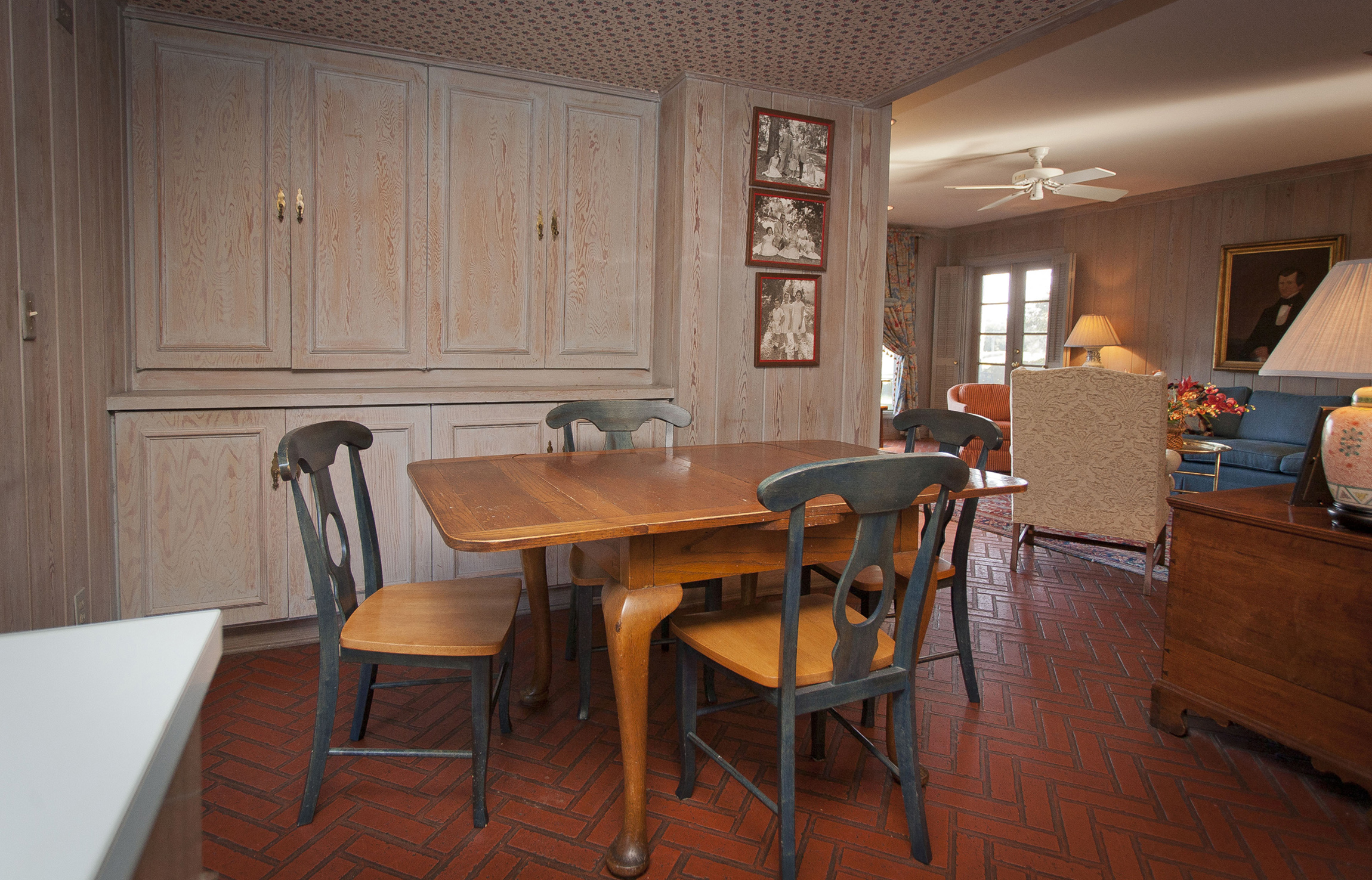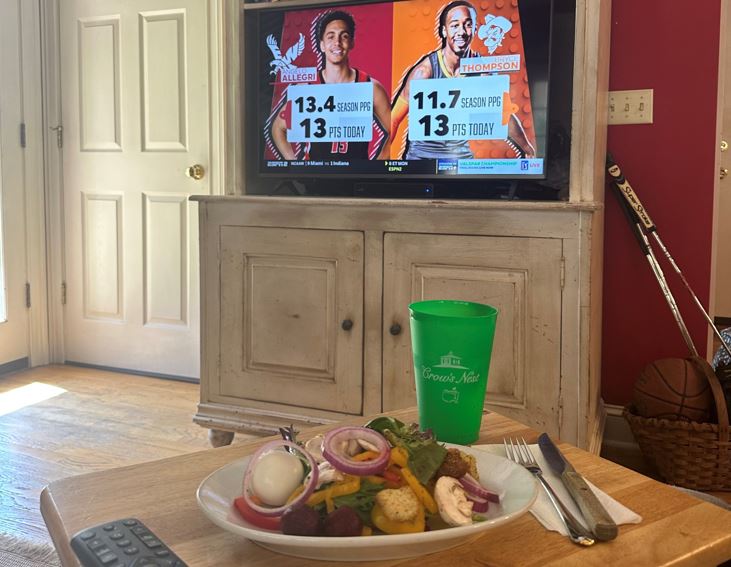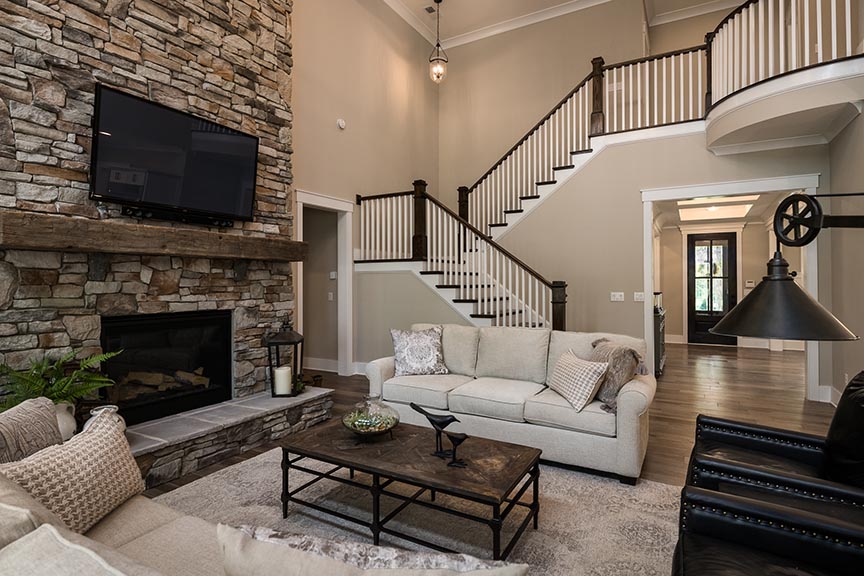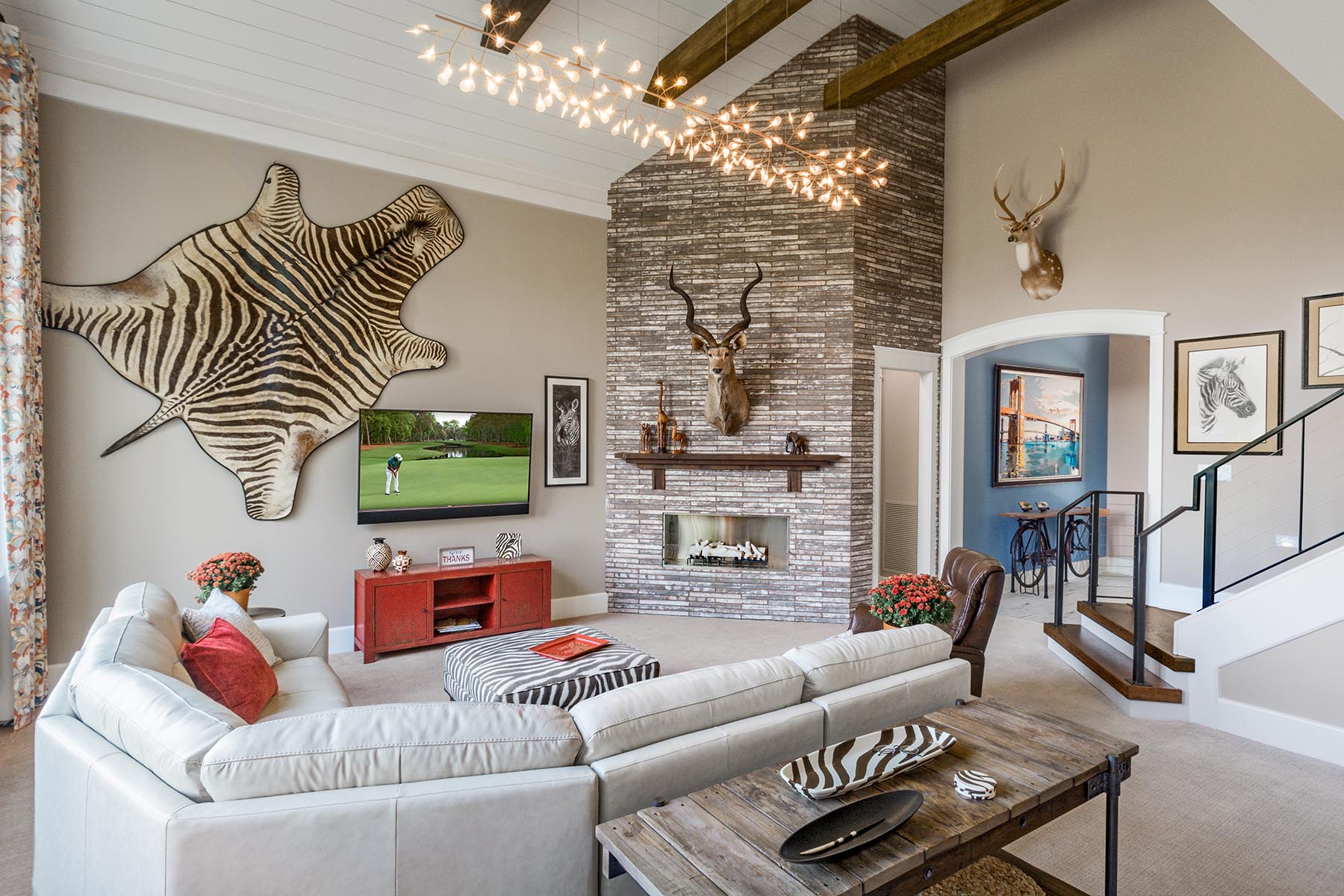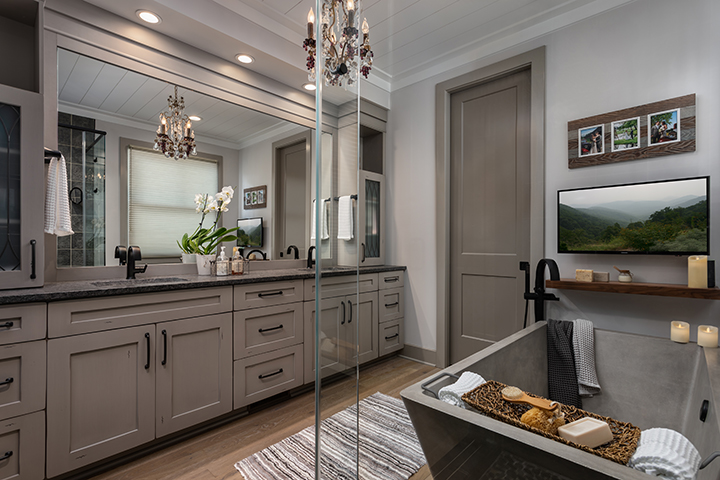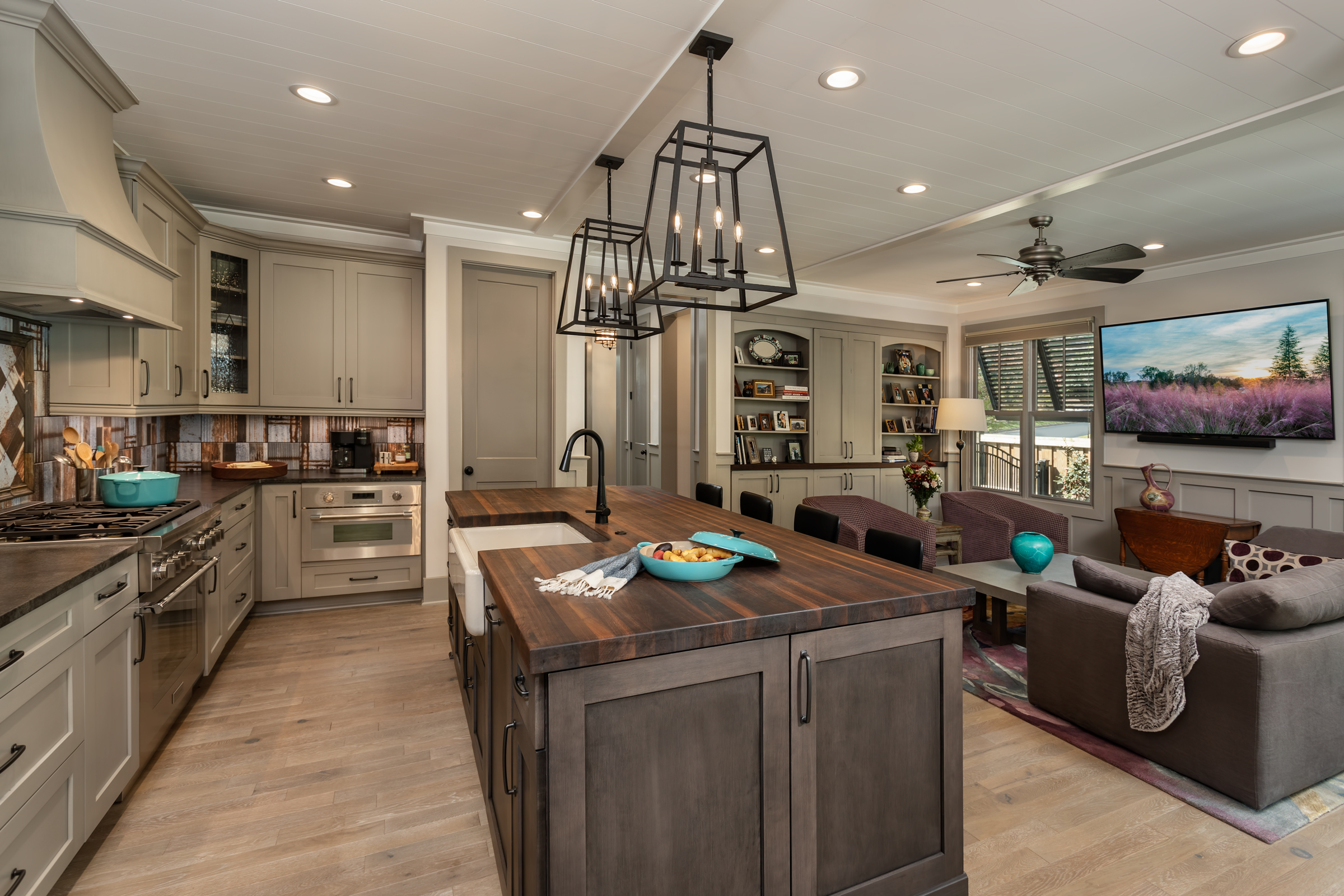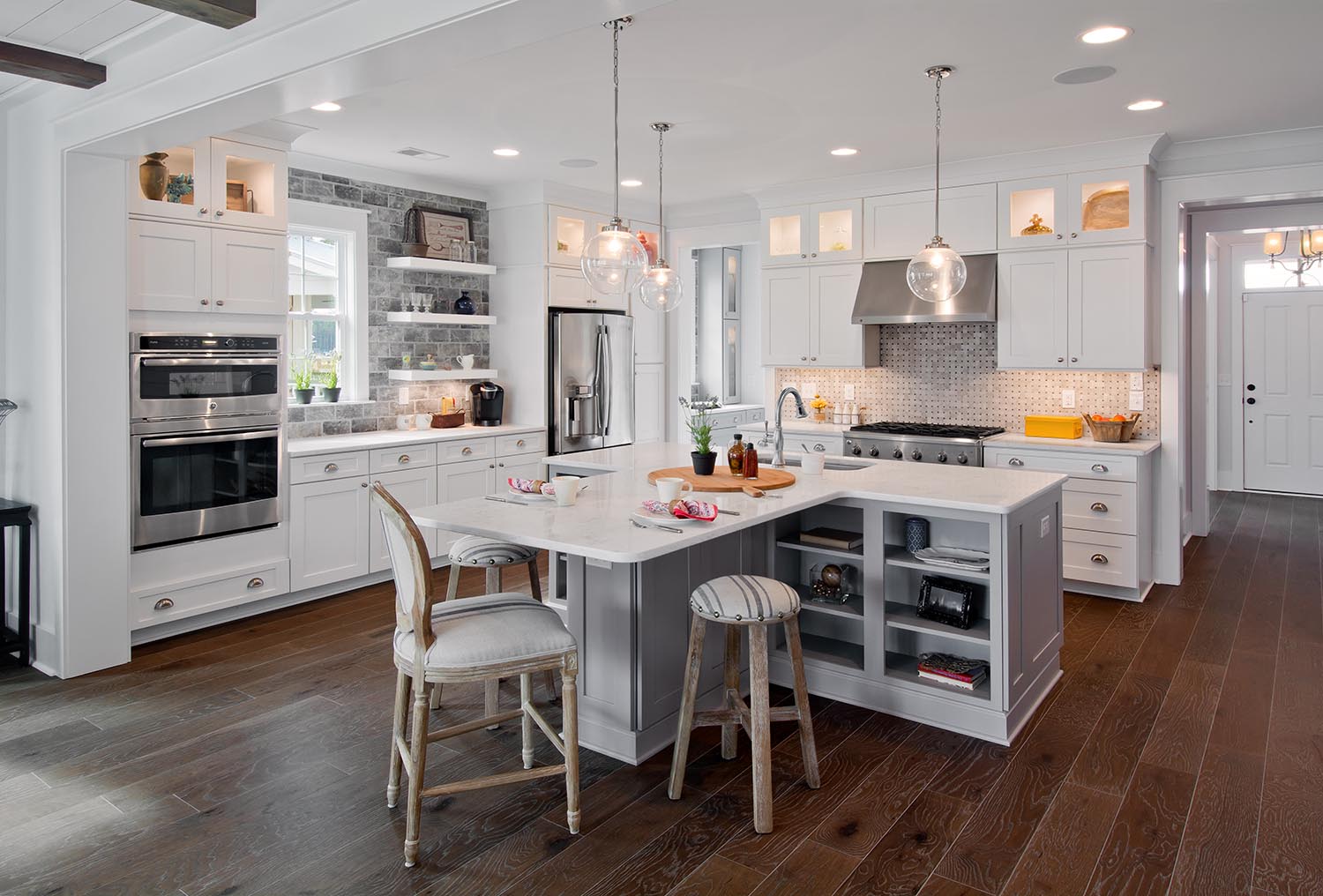Raise your hand if you remember TV trays. Chances are, the younger crowd hasn’t seen one outside of a sitcom or their grandparents’ living room. TV trays have been around since the fifties. This coincides with TV dinners, the catchy name that Swanson had for their frozen food dinners.
Watching TV and eating seem to go hand in hand. Whether just snacking while watching the super bowl or consuming the evening meal in front of your favorite show. Advertisers know this – hence the reason we see so many ads for food and beverages on the TV.
But so much has changed in the design of our homes and our TVs since the 1950’s.
Where was the TV?
Houses in the fifties and early sixties had only one black and white TV. It was often small and was located in either the living room or family room. Indeed, some even called that room the TV room. Early TVs were small and sat on top of furniture. They were so small that you had to be close to watch them. Luxury models were incased in a furniture to match the décor of the living room.
Where did we eat?
When I was growing up, we had only two places to eat in the home. The formal dining room or the table in the kitchen. Both rooms were closed off to other rooms.
This made eating while watching TV challenging as food balanced on one’s lap often doesn’t end well – especially with kids. Spilling an entire dinner in the living room was grounds for punishment or going to bed without dinner. The invention of the TV tray was brilliant.
Many argue that dining should be time to interact with family and friends. Fair enough! Fortunately, on-demand viewing let’s us pause our favorite shows so we can have our cake, eat it, and watch TV too.
TV and the Fireplace
It’s an age-old debate – where do you put the TV and the fireplace? Once upon a time, when TV screens were small but the “box” was big, TVs were placed in a built-in at either side of the fireplace. As TV screens kept getting bigger, the “box” went away. Today, the TV is a flat screen that can hang on the wall. But should the TV be the focal point of the family room? Or should the fireplace take precedent? Many opt to put the TV over the fireplace – but you want to be careful not to place it too high or viewers will get a stiff neck trying to watch it.
I like the TV front and center for the best viewing. The fireplace creates ambiance and doesn’t have to be viewed straight on.
TVs are everywhere
Back in the fifties and sixties, there was only one TV in the house. Now it seems they are everywhere. And it is a good thing too. My husband was watching basketball all weekend long inside while I watched golf on the TV on our back porch.
Many say they need a TV to fall asleep at night – so no surprise, you can find them on the almost all the bedrooms in the house. What about the bathroom? One of my clients installed a TV next to their soaking tub.
And let’s not forget my recent trip to Las Vegas where one was mounted behind the mirror in my bathroom.
TV viewing from the kitchen
As one of the cooks in our family, I like to be able to watch the TV while I am in the kitchen preparing food. Long ago, when kitchens were closed off from the TV room, designers would add a small TV that sat on the countertop – much like the microwave did. It was kind of tacky and I think made the cook feel isolated, banished to the kitchen to watch an inferior TV.
Some clients tell me they want to be able to see the TV while sitting at the kitchen island. To solve for this dilemma, we advocate kitchen islands with seating on at least two sides. That way both the cook and their guests can view the TV concurrently.
What about you?
If you’re feeling retro, you can still buy TV trays at Walmart or online. One advertiser showed a laptop on the TV tray instead of a Swanson dinner. An old tool with a new use. Do you watch TV while eating? If so, in what room? The kitchen? Family room? Outside? As always, I’d love to hear your thoughts!
Categorized in: Uncategorized
This post was written by Housing Design Matters


